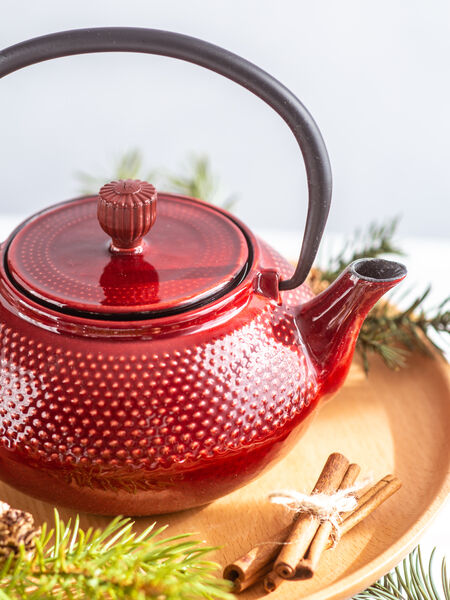Beginner's Guide to Cast Iron Teapots, Part 1


Perhaps no other style of teapot has endured for centuries like the indomitable cast iron teapot. It is the pure definition of durable, it can be used to brew tea or to keep hot water hot enough for multiple infusions without the necessity of boiling the water repeatedly when you want more.
The two main types are being made today are Japanese glaze-lined cast iron teapots (Tetsu Kyusu or “iron teapot”) and Japanese unglazed cast iron teapots (Tetsubin).
China, home of the classic purple clay Yixing teapot, has a thriving iron teapot-making tradition, using many principles of craftsmanship and classic designs from the Japanese tradition yet modernizing shapes, sizes, and adding colored glazes.
The larger pots are perfect for brewing tea for a crowd or using them to keep water hot for smaller gatherings. The smaller pots are ideal for intimate gatherings or when you want to offer guests several tea or tisane choices. And, of course, they’re perfect for solo tea enjoyment or “tea for two”.
In choosing any iron teapot, it’s important to lift it up and down several times, to match your comfort level with the movement, reminding yourself that the pot will be considerably heavier when filled with water. A perfect reason to choose several smaller pots!
Glazed interior or unglazed?
Choose the pot to match your tea-drinking requirements:
• If the pot is glazed on the inside you can brew any type of tea in it any time. Some glazed teapots come with a filter and others do not; either way you can brew tea in them loose leaf with a removable stainless steel infuser or you can brew the teas in their mythical “agony of the leaves” then filter out the leaves when your tea is fully brewed. Modern glazed teapots are made in a mold, hand painted and hand glazed, then nature-inspired details are added.
• Larger pots should definitely be used either to brew water, keep water hot for subsequent infusions or to brew tea with a filter because allowing excess tea to remain in a pot will cause the tea to be excessively astringent. With high-quality teas, you can achieve two or four infusions easily in the smaller sizes, and that makes over-brewing avoidable. Small sizes are those holding 10 to 25 ounces. Larger sizes range from 30 to 60 ounces.
• If the inside of the pot is unglazed on the inside, it is best to brew only one type of tea for the life of the pot, just as you would an Yixing clay pot. Choose one tea type only (green, oolong, black or pu-erh; or a favorite tisane) and brew that type of tea each time in your pot. These are ideal for loose leaf tea brewing.
• Brewing different teas in unglazed pots may, over time, cause the inside area to absorb the variety of tea flavors and scents and make tea brewed in it taste murky or bitter.
• All cast iron and glazed pots hold heat in well, often for more than an hour, are durable, and should last many decades. Ancient cast iron pots have often been dated to 200-300 years old.
Cast Iron Teapot Brewing Directions
• Preheat your teapot for best results. Boil water to desired temperature in your tea kettle. Remove both the lid and its infuser basket. Pour about a cup of hot water into the teapot and cover with the lid. Let the pot sit for two minutes, then pour out the hot water and discard. Your teapot is now ready to brew tea.
• To brew a pot of tea, put the amount of tea desired into the infuser basket, if using, and put the basket into the pot. Add the appropriate amount of heated water.
• Place the teapot on a trivet. Because it retains heat so well, it could stain or burn tabletops.
• Time the brewing. When steeped fully, remove the teapot lid, then remove the infuser basket and set the basket aside. Replace the teapot lid.
• Use a potholder or heavy cloth on the handle as it may be hot.
• Serve your guests.
• You can re-infuse the tea with water several times, as desired, for slightly longer periods of time with each infusion Always remove the infuser as the tea will get bitter if it remains in the hot water after the suggested brewing time.
